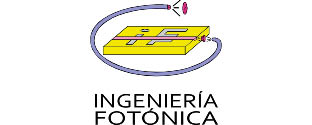
José Miguel López-Higuera
Avda. Los Castros s/n
39005 Santander (Cantabria)
942201498
The Photonics Engineering Group (PEG) of the University of Cantabria generates knowledge and technique in the Photonic field with a special focus on solving real problems (not yet resolved or insufficiently determined) and, in the search for their solution, generate knowledge and technique that gives rise to publications, thesis and patents. During this process Information and Communication Technologies (ICT) can be used as an appropriate supplement.
PEG is formed by more than 30 research, scientific and technical staff following a dynamic model, where a part of the members is dedicated more intensively to the generation of knowledge and training, during a period of time, and the others, to the application of knowledge and technique performing development and innovation for the optimization of their interaction and the transference of results to the productive sector. This, in turn, feedback the group with real problems to be solved and resources to best carry out their mission.
PEG has a R&D&I Photonics Laboratory (457 m2) equipped with facilities of Optical Fiber, Optical, Opto-Electronic, Electronic, Climatic, Thermal imaging characterization, Additive Manufacturing, Lasers, etc.
More than 50 R&D&i projects have been carried out with companies to improve their production processes or the quality of their products; or even, to innovate or to develop new products. The developed (and transferred) knowledge and technique have been able to improve their productivity and/or ensure their qualities. In addition, four spin-offs have emerged from PEG: TELNOS, Optical and Telecommunications systems (2005); Empiric Technologies, SL (2010), Sadiq Engineering (2011) and Edronica (2016).
Main Research Lines
Since its foundation (1992) PEG has been focused on Photonic/Optical/Fiber optic sensors; fiber light sources; Optoelectronics Instrumentation; Techniques of detection, Measurement and Monitoring of events and processes using image for any sector of application.
Without neglecting collaborations proposed from other sectors, PEG has very recently decided to focus its work on R&D&I, mainly, in life sciences and health. This decision is backed by a great progress in the Photonics knowledge, methods and techniques able to be used in biological sciences and health that are significantly contributing to the solution of several of the “societal challenges” of our time [as defined in the Lund Declaration www.vr.se/lunddeclaration2015 ].
PEG has joined the Centro de Investigación Biomédica en Red (CIBER-BBN) of IS Carlos III (2016), and also joined at the Instituto de Investigación Sanitaria de Valdecilla (IDIVAL) and set the “Photonics for the Life and Health” program which includes four strategic R&D lines:
1.- Medical diagnostic tools based on Photonic Imaging (Multi, Hyperspectral, OCT, Thermografy, etc);
2.- Devices and Systems (including those referred to as smart ) for a better diagnosis and monitoring of diseases with special emphasis in the elderly population;
3.- Interaction of light-matter as a basis for new therapies based on light and/or the manufacture of micro/nano structures by interaction of laser-matter for diagnosis and therapy;
4.- Optical devices without contact and Optoelectronic Efficient Systems (low cost or cost-effective) for quality and safety and security of food.